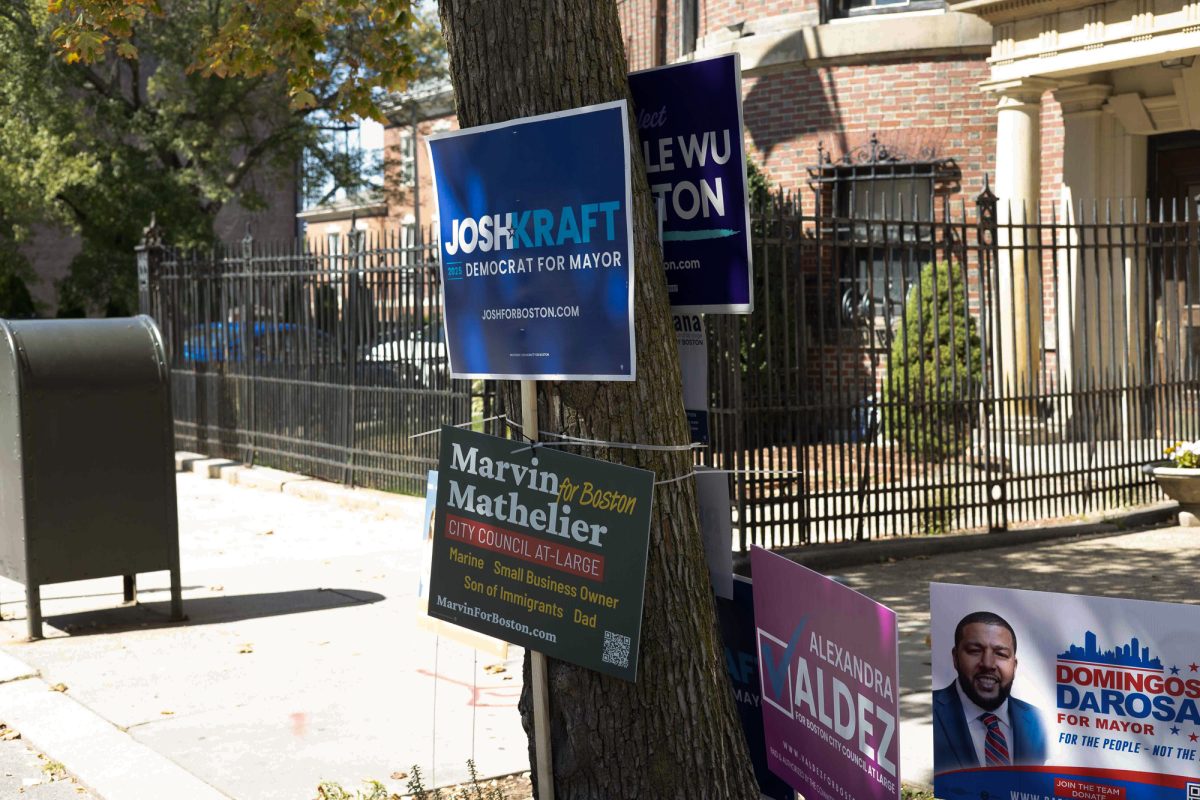For more than 80 years, Boston University’s Charles River Campus has been defined and shaped by Commonwealth Avenue. A major artery for the city of Boston, the thoroughfare has served as the university’s special link to the city, and is largely responsible for BU’s cosmopolitan appeal.
But today, traffic along Commonwealth Avenue is heavier than ever, consisting of motor vehicles, bicycles and pedestrians. Even with the recently completed construction measures along BU’s two-mile strip of avenue, students ‘-‘- particularly cyclists ‘-‘- are increasingly being hurt on campus. The BU administration is finally taking action, but it is currently misdirected and will fail to solve the real problems on Commonwealth Avenue.
With the effective completion of the Commonwealth Avenue Improvement Project this summer, new bicycle lanes made their debut along a part of the Charles River Campus alongside regular traffic lanes. Though they have made BU a more bicycle-accessible place, more cyclists on the road hasn’t necessarily translated into a safer place for cyclists. According to the BU Police Department, there have been as many as 20 bicycle-automobile accidents on campus this year, compared with 12 last year. That increase, according to the BUPD, can be attributed to a greater number of students cycling on Commonwealth Avenue.
In light of a string of recent cycling accidents on campus ‘-‘- at least four since September ‘-‘- BU administrators formed the Bicycle Safety Committee, with the goal of creating ‘a better environment for BU’s bicycling community.’ And though their current initiatives ‘-‘- focusing on ‘safety and enforcement issues’ and implementing more bike racks ‘-‘- will certainly help reach this goal, it fails to explicitly address the growing problem of car-bike collisions on Commonwealth Avenue.
Granted, there is only so much the university can do directly to protect cyclists on a city-owned road, but it must work as closely as possible with the city to resolve the situation. Putting up signage warning drivers of heavy bicycle traffic will help, but it will not do nearly enough to prevent motorist and cyclist negligence from causing more accidents. Boston Police Department cruisers rarely patrol the BU section of Commonwealth Avenue, since most issues are handled by the BUPD. BUPD officers do not exercise their authority to make traffic stops for minor traffic infractions, even though they are in a position to make most of the stops that would promote public safety along the strip.
Given the routinely agonizing construction delays of Kenmore Square, outbound drivers are even more likely to step on the gas and speed away from the construction through BU’s main campus. In contrast, most students who choose to cycle through campus are making a journey of two miles or less. Shorter trips more often require crossing the road. This combination presents a seriously dangerous situation for motorists, pedestrians and cyclists on the avenue, especially considering the lack of police patrols in the area. Left unchecked, it’s a wonder how even more accidents are avoided.
To combat this last year, BU tried a pedestrian awareness initiative meant to educate students on safer ways to navigate Commonwealth Avenue. During that very month, there were four separate incidences of students being struck by cars. There’s little evidence to support the organizing of a bicycle equivalent of this plan would be any more effective, but it’s clear that some need to be educated on proper traffic laws and behavior.
Bicyclists in Massachusetts are required to follow the same traffic rules as motor vehicles. While cyclists often cry ‘share the road,” they must also be willing to ‘share’ the same rules and responsibilities as motorists. Despite the fact that the city of Boston hasn’t been enforcing traffic violations on cyclists ‘-‘- especially on BU’s campus ‘-‘- that doesn’t give student-cyclists the green light to roll through a red light.
Drivers in Boston are notorious for poor judgment and risky maneuvers, but when it comes to sharing the road with cyclists, both categories of commuters must be equally sharp and aware of the other to avoid serious injuries or worse.
The BU administration is doing the right thing by assembling a community-based committee to address the problems. Its ideas are sound, and will create a more bike-accessible campus for students, but it should only move forward when the situation is truly safe for cyclists on Commonwealth Avenue. For example, adding additional bike racks will certainly help prevent bicycle theft and make the campus more bike-accessible as a whole, but by doing so, will undoubtedly add to the number of cyclists on the streets. Without measures to prevent future accidents and problems, more cyclists will only result in more accidents.
Until the university and city can work to create a real change for the area, all students must stay extra-sharp and aware of their surroundings while navigating BU’s campus. All kinds of commuters ‘-‘- motorists, cyclists and pedestrians ‘-‘- must act defensively. Drivers must brake earlier, cyclists must obey regular traffic laws and pedestrians must wait until it is really safe to cross the road.

















































































































J.J. • Aug 3, 2010 at 2:20 pm
I would like to see more action taking towards double-parked cars. I was doored on Comm. Ave. in front of B.U. several years ago. The people who doored me were attending a B.U. art exhibit and wanted to let people off at the front door before legitimately parking.